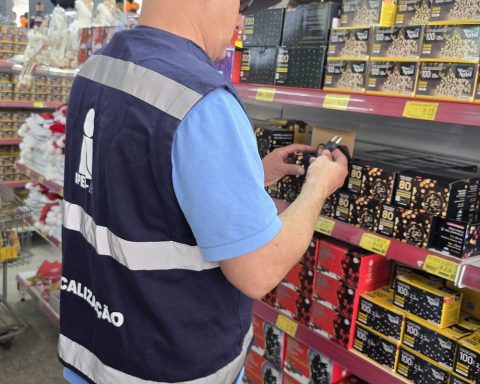A survey by the Applied Economic Research Institute (Ipea), released today (14), shows that inflation in November was below that registered in October for all income brackets. The data show that the greatest inflationary pressures were caused by three groups: food and beverages, transport and housing.
The Ipea Inflation Indicator by income bracket is published monthly. The survey considers six categories of household income: very low (less than BRL 1,726.01), low (between BRL 1,726.01 and BRL 2,589.02), medium-low (between BRL 2,589.02 and BRL 4,315.04), medium (between BRL 4,315.04 and BRL 8,630.07), medium-high (between BRL 8,630.07 and BRL 17,260.14) and high (greater than BRL 17,260.14).
In November, the lowest changes were registered for high-income (0.27%) and very low-income (0.33%) families. In October, in the same ranges, inflation had been respectively 1.14% and 0.51%.
The greatest variations were observed in the upper-middle income (0.49%) and middle income (0.46%) classes. However, even in these ranges, inflation was higher in October, registering respectively 0.64% and 0.61%.
In the accumulated result for the year, the lowest variation is 4.87% for low-middle income families. The highest, 6.27%, was observed for high-income families. The Extended National Consumer Price Index (IPCA), calculated by the Brazilian Institute of Geography and Statistics (IBGE) and used as the official inflation index in the country, registers a variation of 5.13% since the beginning of the year.
Food and drinks
In November, food and beverages pressured inflation for all six categories. In addition, with the readjustment of rents and electricity tariffs, housing had a significant influence on the variation for very low-income families. For the four intermediate income brackets, there was an impact from the cost of transport, which is associated with higher fuel prices. Higher-income families, on the other hand, were pressured by health-related prices, mainly involving increases in plan monthly fees.
The survey also shows that, among food and beverages, the most relevant increases were registered among tubers (10.1%), cereals (0.97%), fruits (2.9%), farinaceous products (1.1%). and baked goods (0.73%). On the other hand, there was a drop in the prices of milk and derivatives (-3.3%) and poultry and eggs (-0.51%).















